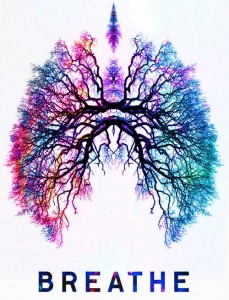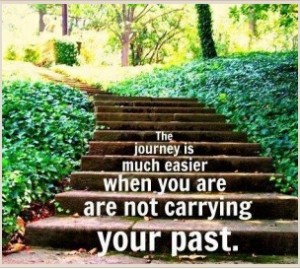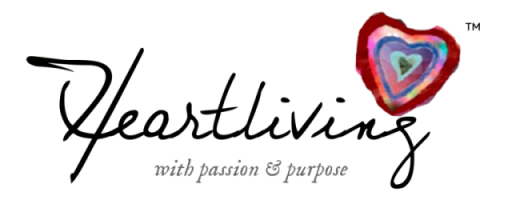by Cynthia Bischoff | Apr 15, 2018 | Heartliving
 In order to manifest your greatest potential, it is necessary to have effective boundaries—to know where you begin and end; to do what you wish to do and not what you believe is expected of you (something that often creates resentment); to give with real love and not because giving is expected. In coaching, I sometimes encounter what I call “common boundary myths” among my clients. Do any of these ideas seem familiar to you? Myth #1: If I set boundaries, I will hurt others. If you set boundaries, you may fear that your limits will hurt someone else, particularly someone who seems to really need you. For example, let’s say a friend needs you to do a favor for her—but this favor greatly impacts your plans for free time which you have very little of and desperately need for your own balance. You are kind to this friend and often help her. In reality, appropriate boundaries don’t control or hurt anyone. Saying no to this person who is responsible for getting her own needs met really doesn’t hurt her. She may have to seek elsewhere to have her needs met, but the question is more for you: Are you okay not being the one who is rescuing or helping her? Are you okay not being the one who is needed? Often, poor boundaries result when a person has a need to feel needed or to be a rescuer of others. Myth #2: If I set boundaries, I am being selfish. One of my clients indicated that she had a deep-seated fear of being selfish, of being interested in her own concerns over those of others. Her mother had instilled in her a belief that putting herself last was important if she wished to be loving and kind. Interestingly, having appropriate boundaries actually increases our ability to care for others. When we give with full awareness and conscious choice, we value ourselves and the other person in the process. We make a choice to give because it is what we want to do, not what we believe we must do. If a lack of boundaries causes us to mismanage our own energy, our own soul, then saying no is an important way to protect ourselves and each other. Myth #3: If I set boundaries, I may be rejected. Often we participate in “people pleasing” as a way to be loved. We may fear that we are not nice enough and that, as a result, someone may reject or leave us. This can create a false presence in that we are presenting one way and yet feeling another. We may even end up feeling resentful. Having good boundaries with others is a necessary and natural component in all effective relationships.
In order to manifest your greatest potential, it is necessary to have effective boundaries—to know where you begin and end; to do what you wish to do and not what you believe is expected of you (something that often creates resentment); to give with real love and not because giving is expected. In coaching, I sometimes encounter what I call “common boundary myths” among my clients. Do any of these ideas seem familiar to you? Myth #1: If I set boundaries, I will hurt others. If you set boundaries, you may fear that your limits will hurt someone else, particularly someone who seems to really need you. For example, let’s say a friend needs you to do a favor for her—but this favor greatly impacts your plans for free time which you have very little of and desperately need for your own balance. You are kind to this friend and often help her. In reality, appropriate boundaries don’t control or hurt anyone. Saying no to this person who is responsible for getting her own needs met really doesn’t hurt her. She may have to seek elsewhere to have her needs met, but the question is more for you: Are you okay not being the one who is rescuing or helping her? Are you okay not being the one who is needed? Often, poor boundaries result when a person has a need to feel needed or to be a rescuer of others. Myth #2: If I set boundaries, I am being selfish. One of my clients indicated that she had a deep-seated fear of being selfish, of being interested in her own concerns over those of others. Her mother had instilled in her a belief that putting herself last was important if she wished to be loving and kind. Interestingly, having appropriate boundaries actually increases our ability to care for others. When we give with full awareness and conscious choice, we value ourselves and the other person in the process. We make a choice to give because it is what we want to do, not what we believe we must do. If a lack of boundaries causes us to mismanage our own energy, our own soul, then saying no is an important way to protect ourselves and each other. Myth #3: If I set boundaries, I may be rejected. Often we participate in “people pleasing” as a way to be loved. We may fear that we are not nice enough and that, as a result, someone may reject or leave us. This can create a false presence in that we are presenting one way and yet feeling another. We may even end up feeling resentful. Having good boundaries with others is a necessary and natural component in all effective relationships.
by Cynthia Bischoff | Apr 8, 2018 | Heartliving
 Your breathing patterns reflect your engagement with your world. As a certified Breathwork practitioner, I was trained to evaluate a person’s breathing patterns, understanding that the “in-breath” is considered “our will” (our connection with life) and the “out-breath” (or exhale) is considered to represent our relationship to God’s will (the process of surrendering and letting go). Interestingly when a person is anxious or trying to control life, he or she typically has a short exhale pattern.
Your breathing patterns reflect your engagement with your world. As a certified Breathwork practitioner, I was trained to evaluate a person’s breathing patterns, understanding that the “in-breath” is considered “our will” (our connection with life) and the “out-breath” (or exhale) is considered to represent our relationship to God’s will (the process of surrendering and letting go). Interestingly when a person is anxious or trying to control life, he or she typically has a short exhale pattern.
Throughout the day, check in with your breathing. Is it shallow and tight? Are you tense, angry, anxious, or relaxed? If so, it is most likely reflected in your breathing. You might even be holding your breath as a way not to feel your emotions, particularly if they are negative.
Your breathing serves to connect you with yourself and others, so that not breathing fully can be an unconscious defense mechanism for disconnecting from emotions you’d rather not feel. Even though shallow breathing can lessen your ability to feel your emotions, it can also repress them so that you create a pressure cooker of emotions internally, creating dis-ease in the body.
To promote better health:
- Check in with your breathing periodically throughout the day. Are you taking short, shallow breaths or is your breathing deep and relaxed?
- Decide what you have going on emotionally and how does your breathing at that moment might reflect this?
- If you realize that your breathing is shallow, take deeper breaths and check in with how you are feeling.
- Are you able to expand the lower abdomen as you breathe in, opening the lower chakras with the breath? (A chakra is an energy center in the body. My energy medicine teacher, Caroline Myss, suggested that all disease originates in blockages in the first 3 chakras.)
With every inhalation, mentally reinforce that you are opening your body to a healthy flow of energy. The dance of your breathing will tell you much about your relationship to life!
by Cynthia Bischoff | Mar 18, 2018 | Heartliving
Tremendous power exists in the present moment, and there are three magic words I use in my coaching to remind you that today is a new day and therefore new possibilities exist. You don’t have to drag your history along with you! Watch this video to learn more.
by Cynthia Bischoff | Mar 11, 2018 | Heartliving
 Before the advent of modern technology, our intuition is what kept us alive. Our ancestors paid careful attention to the land, seas, and seasons. They were highly attuned to the Earth’s rhythms and “reading” what was around and within them.
Before the advent of modern technology, our intuition is what kept us alive. Our ancestors paid careful attention to the land, seas, and seasons. They were highly attuned to the Earth’s rhythms and “reading” what was around and within them.
Through generations of observation and perception, they came to know their world intimately and to look for signs that would assist them on their life journey.
What our ancestors knew and what we have found out is that each of us is connected to a universal source of awareness that is often referred to as the “flow.” In modern times, how do we connect with this source of flow?
To start, we have to surrender trying to control things with our rational minds. Instead, we find a balance in our lives between directing and allowing–between understanding things rationally and allowing for intuitive awarenesses.
Studies have shown that the flow state is commonly associated with peak performance in creativity. When a person is in a highly creative state, the person has entered a state of flow that doesn’t feel restricted by outer conventions.
How might you enter this flow state? A first step is to practice listening to your intuition. In other words, don’t try to “figure things out” with your rational mind, but instead, allow for silence and be open to concepts, ideas, hunches, that may randomly come to you.
You could take an issue you want to explore. Pause, empty your mind of distractions, take a deep breath, and focus your mind on one or two words related to the issue. For example, you might want to change careers and the words “right livelihood” might come to you. Just focus on these words: “right livelihood.” As additional information comes to you about this, do not try to analyze it or intellectually understand what it means at that moment. Simply accept all images, ideas, words, and sounds that come since they may be fragments, or parts, of a whole message. Over time, additional fragments will come until you have a fuller message.
It is also helpful to keep an intuition journal–a log of your hunches, gut feelings, ideas. You can “guess” before you get to work what color your first client may be wearing, which bank line will go quickest for service, how many messages are in your “In Box” when you log on. These are a few simple ways you can pause, intuit an idea, and then confirm your intuition.
Acknowledge that messages can come to you from roadway signs, license plates, radio songs, and so on. Be mindful of what things might mean or how they might be symbolic. Know that everything speaks to you when you request to be in the flow.
Think of each day as a blessed opportunity to connect with your world in a sacred way!
by Cynthia Bischoff | Feb 25, 2018 | Heartliving
 Often, clients ask whether or not it is really helpful to explore past unresolved issues. It is okay to question whether going back into the past is pertinent to being in your life right now. I believe that most often it is since the past is often symbolic of the present. The past may hold a trigger or hook as related to your current situation.
Often, clients ask whether or not it is really helpful to explore past unresolved issues. It is okay to question whether going back into the past is pertinent to being in your life right now. I believe that most often it is since the past is often symbolic of the present. The past may hold a trigger or hook as related to your current situation.
Even though you are living right now, it is often helpful to work with feelings about past events. Often painful, unresolved issues affect what is happening in the present. When you work through past issues, it does not mean that you are going back to live in the past. Often when you return to old memories, you will find that something is crying out for release.
A technique that may help you is to allow yourself to go back to a particular painful incident and bring it into your awareness as you sit quietly. State the intention that you will review the incident from the “Witness” standpoint. What if you could hover above the scene and view it? As feelings come up, stay the witness to them. If there are certain issues that feel too painful to move into, they are usually the most pertinent ones that are needing attention. They are also possibly influencing you in ways that you may not suspect in the present. What was the meaning of them in the past? What is the meaning now? How is your current situation like and not like the past?
When you go back into the past, you may or may not gain understanding right away. Most importantly, just allow the feelings to come up and experience and accept them. This will help to integrate the feelings, and understanding will most often occur as a result of integration.
And then there is the question of “When is enough, enough?” If you start to find that there is “power” in your wound, you will hold onto it. That type of power is not true power. So, yes, when you “feel” that you have moved through the feeling (and I think you will know when this occurs), you move on.
 In order to manifest your greatest potential, it is necessary to have effective boundaries—to know where you begin and end; to do what you wish to do and not what you believe is expected of you (something that often creates resentment); to give with real love and not because giving is expected. In coaching, I sometimes encounter what I call “common boundary myths” among my clients. Do any of these ideas seem familiar to you? Myth #1: If I set boundaries, I will hurt others. If you set boundaries, you may fear that your limits will hurt someone else, particularly someone who seems to really need you. For example, let’s say a friend needs you to do a favor for her—but this favor greatly impacts your plans for free time which you have very little of and desperately need for your own balance. You are kind to this friend and often help her. In reality, appropriate boundaries don’t control or hurt anyone. Saying no to this person who is responsible for getting her own needs met really doesn’t hurt her. She may have to seek elsewhere to have her needs met, but the question is more for you: Are you okay not being the one who is rescuing or helping her? Are you okay not being the one who is needed? Often, poor boundaries result when a person has a need to feel needed or to be a rescuer of others. Myth #2: If I set boundaries, I am being selfish. One of my clients indicated that she had a deep-seated fear of being selfish, of being interested in her own concerns over those of others. Her mother had instilled in her a belief that putting herself last was important if she wished to be loving and kind. Interestingly, having appropriate boundaries actually increases our ability to care for others. When we give with full awareness and conscious choice, we value ourselves and the other person in the process. We make a choice to give because it is what we want to do, not what we believe we must do. If a lack of boundaries causes us to mismanage our own energy, our own soul, then saying no is an important way to protect ourselves and each other. Myth #3: If I set boundaries, I may be rejected. Often we participate in “people pleasing” as a way to be loved. We may fear that we are not nice enough and that, as a result, someone may reject or leave us. This can create a false presence in that we are presenting one way and yet feeling another. We may even end up feeling resentful. Having good boundaries with others is a necessary and natural component in all effective relationships.
In order to manifest your greatest potential, it is necessary to have effective boundaries—to know where you begin and end; to do what you wish to do and not what you believe is expected of you (something that often creates resentment); to give with real love and not because giving is expected. In coaching, I sometimes encounter what I call “common boundary myths” among my clients. Do any of these ideas seem familiar to you? Myth #1: If I set boundaries, I will hurt others. If you set boundaries, you may fear that your limits will hurt someone else, particularly someone who seems to really need you. For example, let’s say a friend needs you to do a favor for her—but this favor greatly impacts your plans for free time which you have very little of and desperately need for your own balance. You are kind to this friend and often help her. In reality, appropriate boundaries don’t control or hurt anyone. Saying no to this person who is responsible for getting her own needs met really doesn’t hurt her. She may have to seek elsewhere to have her needs met, but the question is more for you: Are you okay not being the one who is rescuing or helping her? Are you okay not being the one who is needed? Often, poor boundaries result when a person has a need to feel needed or to be a rescuer of others. Myth #2: If I set boundaries, I am being selfish. One of my clients indicated that she had a deep-seated fear of being selfish, of being interested in her own concerns over those of others. Her mother had instilled in her a belief that putting herself last was important if she wished to be loving and kind. Interestingly, having appropriate boundaries actually increases our ability to care for others. When we give with full awareness and conscious choice, we value ourselves and the other person in the process. We make a choice to give because it is what we want to do, not what we believe we must do. If a lack of boundaries causes us to mismanage our own energy, our own soul, then saying no is an important way to protect ourselves and each other. Myth #3: If I set boundaries, I may be rejected. Often we participate in “people pleasing” as a way to be loved. We may fear that we are not nice enough and that, as a result, someone may reject or leave us. This can create a false presence in that we are presenting one way and yet feeling another. We may even end up feeling resentful. Having good boundaries with others is a necessary and natural component in all effective relationships.
 Your breathing patterns reflect your engagement with your world. As a certified Breathwork practitioner, I was trained to evaluate a person’s breathing patterns, understanding that the “in-breath” is considered “our will” (our connection with life) and the “out-breath” (or exhale) is considered to represent our relationship to God’s will (the process of surrendering and letting go). Interestingly when a person is anxious or trying to control life, he or she typically has a short exhale pattern.
Your breathing patterns reflect your engagement with your world. As a certified Breathwork practitioner, I was trained to evaluate a person’s breathing patterns, understanding that the “in-breath” is considered “our will” (our connection with life) and the “out-breath” (or exhale) is considered to represent our relationship to God’s will (the process of surrendering and letting go). Interestingly when a person is anxious or trying to control life, he or she typically has a short exhale pattern. Before the advent of modern technology, our intuition is what kept us alive. Our ancestors paid careful attention to the land, seas, and seasons. They were highly attuned to the Earth’s rhythms and “reading” what was around and within them.
Before the advent of modern technology, our intuition is what kept us alive. Our ancestors paid careful attention to the land, seas, and seasons. They were highly attuned to the Earth’s rhythms and “reading” what was around and within them. Often, clients ask whether or not it is really helpful to explore past unresolved issues. It is okay to question whether going back into the past is pertinent to being in your life right now. I believe that most often it is since the past is often symbolic of the present. The past may hold a trigger or hook as related to your current situation.
Often, clients ask whether or not it is really helpful to explore past unresolved issues. It is okay to question whether going back into the past is pertinent to being in your life right now. I believe that most often it is since the past is often symbolic of the present. The past may hold a trigger or hook as related to your current situation.